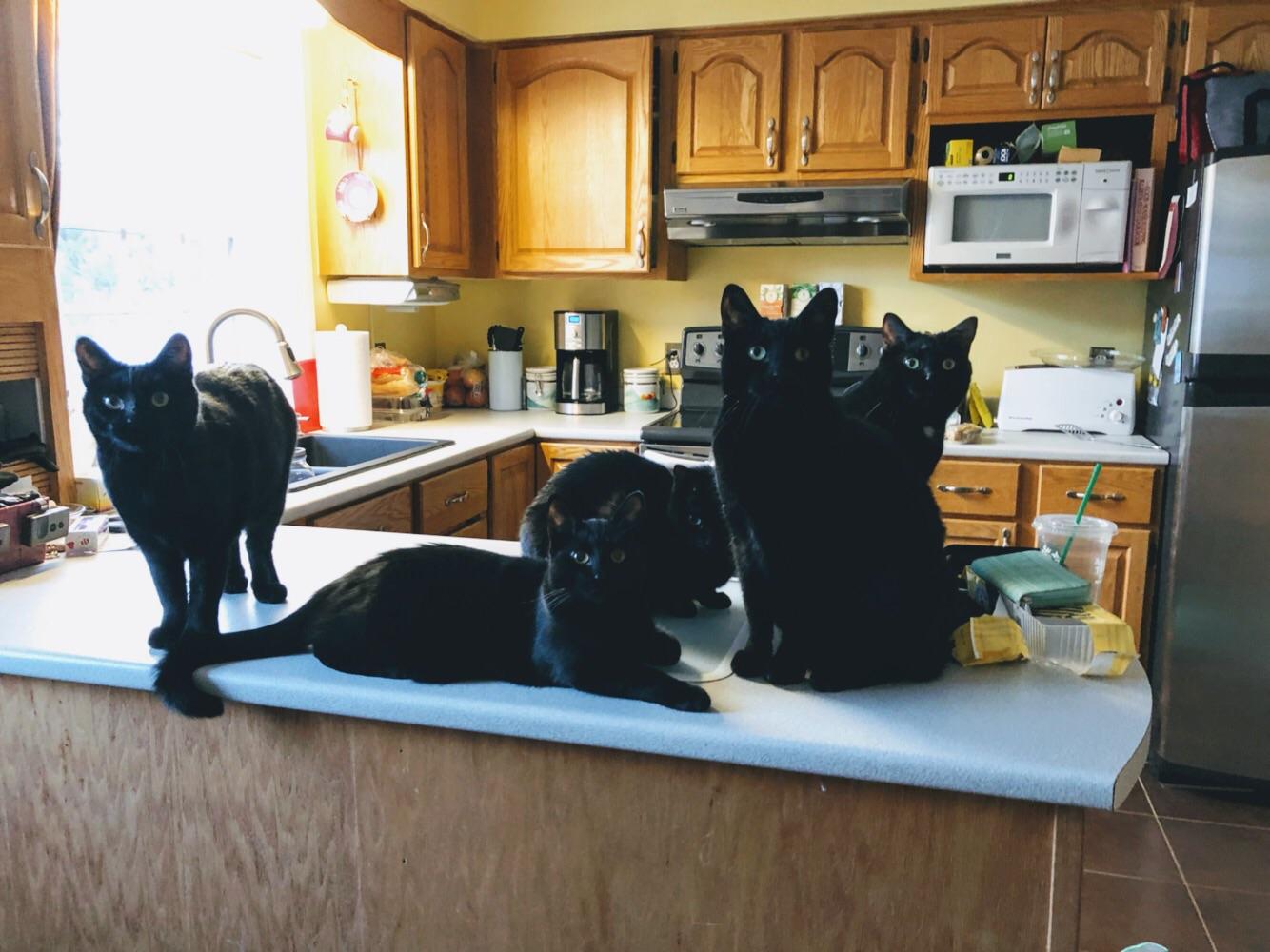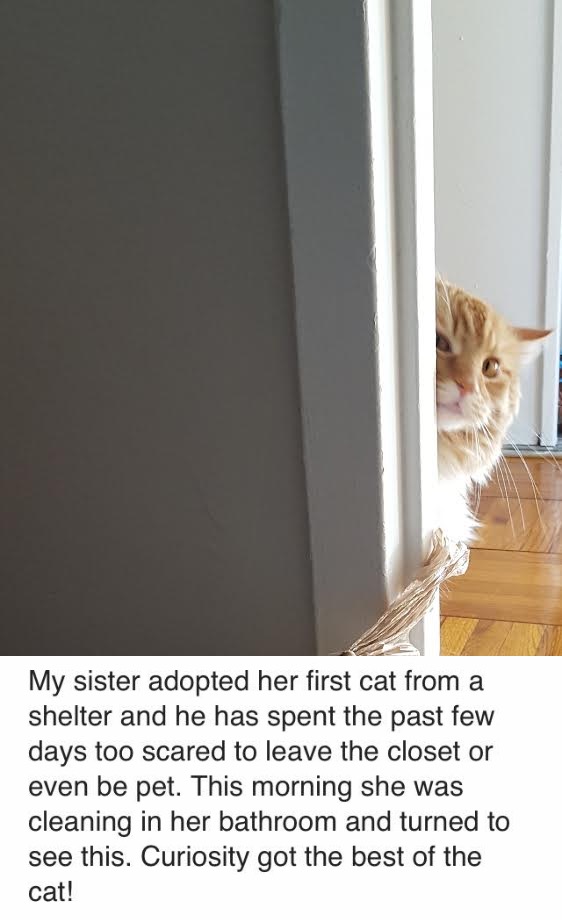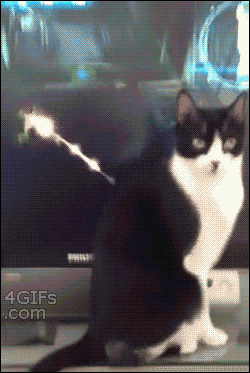The Domestic Cat



Domestic Cat
Kingdom: Animalia
Phylum: Cordata
Class: Mammalia
Order: Carnivora
Family: Felidae
Subfamily: Felinae
Genus: Felis
Species: Felis catus
Members of the Genus Felis:
Jungle Cat
Sand Cat
Black Footed Cat
Wildcat
Domestic Cat
Origin of the Domestic Cat
The Domestic Cat is the only domesticated feline in the world. And the term domesticated should be used lightly as they are not very different from their wild ancestor the Wildcat (specifically, the African Wildcat).
The Wildcat is a small wildcat species found across Europe and Asia. The Wildcat species is comprised of 5 different subspecies. While some of these subspecies live far apart from each other in disparate habitats and possess varying physical attributes, these differences are only matters of geography and outward appearance. All the different Wildcat subspecies can successfully interbreed with one another, producing healthy kittens. The Domestic Cat can also successfully breed with them.
A 2007 study of feline mitochondrial DNA of approximately 1,000 cats from many different regions (including Africa, Azerbaijan, Kazakhstan, Mongolia, and the Middle East) showed 5 genetic lineages of the Wildcat population. These lineages are:
-African Wildcat (Felis lybica) [Africa]
-Southern African Wildcat (Felis cafra) [Southern Africa]
-Chinese Mountain Cat (Felis silvestris bieti) [China]
-Asiatic Wildcat (Felis ornata) [Central Asia]
-European Wildcat (Felis silvestris) [Europe]
Out of these five, genetic mapping shows the Domestic Cat originated from the African Wildcat (Felis lybica). Genetic analysis shows that the Domestic Cat did not evolve from the European species of Wildcat, but rather exclusively from the African Wildcat (Felis lybica).
During the rise of agriculture in the Fertile Crescent in the Middle East approximately 10,000 years ago, African Wildcats were attracted to the rodents living in the grain stores of the farms developing in that region. The cats stuck around for the food and eventually the human companionship. The humans let them stick around because they killed pests and because cats are awesome. These newly domesticated cats became one of the most revered animals in Ancient Egypt.
With the advent of widespread agriculture, came trade via land and sea- and these newly created Domestic cats went along for the ride.
“Cat skeleton analyses, together with the mammal iconography, allow researchers to make an assumption that cats reached Europe migrating from the Near East, through Anatolia, Cyprus, Crete, Greece, to Ancient Rome, ….. and to the Celts and Germans.”
source: https://phys.org/news/2020-07-years-history-domestic-cats-central.html
The difference between the Wildcat, the Domesticated Cat, and feral cats:
Wildcats are actual wild cat species- not to be confused with a feral cat (which is a Domesticated Cat that has returned to living in a wild state.) However, one could argue that the Domestic Cat is barely domesticated itself.
A note about the Domesticated Cat: they aren’t totally domesticated animals even though they are capable of behaving tamely around humans and most do enjoy living with them. Some small genetic changes have occurred within the Domestic Cat’s genome, but regardless, most Domesticated Cats retain a certain wildness and are quite capable of living like their wild ancestors. Here is a study about the minute genetic changes Domesticated cats have undergone: https://www.livescience.com/48696-origins-of-cat-domestication.html
Domestic Cat Behavior
Domestic cats can be solitary and live like lone panthers or they can behave like lions in a pride. They enjoy a warm social life with humans as well as other animals like other cats, dogs, horses, etc. Feral cats often live in colonies ( groups of other feral cats.
Environmental Issues
Domestic cats are capable of decimating the local populations of songbirds, small mammals, and reptiles in their neighborhood, and should be kept inside to protect wildlife (as well as for the cat’s own safety).
Cats can get hit by vehicles, or eaten by coyotes, or harmed by people. There are too many risks; please keep your cats indoors or supervise them in a safe outdoor space. More people are now building catios (safe outdoor enclosures for cats) so they can enjoy the outdoors without any danger.
Adopt Rescues
There’s lots of stray cats in need of loving homes- please adopt rescue kitties. Mixed breed cats are also healthier and longer lived than purebred cats.
Outlaw Declawing
Declawing cats is barbarous and abusive. It is like cutting off the fingers above the end joint on a human hand (the end of the cat’s bones are removed along with the claws) and it results in arthritis and pain for the rest of the cat’s life, not to mention the psychological trauma of knowing it cannot hunt or defend itself.
Outlaw Stump-legged, Flat-faced, And Hairless Cat Breeding
Recently unethical breeders have been breeding cats with shortened deformed legs, known as Munchkin cats. This should be against the law- these animals can’t move like they were meant to and they experience psychological and physical issues as a result of this congenital deformity.
Hairless cats suffer all kinds of health issues as well; it is a cruel breeding practice. Many Kittens get Respiratory illnesses from exposure. These cats can suffer from Hypertrophic Cardiomyopathy and hereditary myopathy. Cats evolved to have coats- don’t make them go cold and naked!
It is also wrong to breed cats with flat faces (they can’t breathe well) or misshapen ears (Scottish fold cats are prone to hearing issues, ear infections, and body deformities.) Just let cats be how Mother Nature intended: gorgeous, healthy, sound in body, and happy.
Outlaw Designer Cat Breeding
Here are some facts about designer cat hybrids such as Bengal cats. Creating Bengals is unethical because they come from crossing captive Asian Leopard Cats (a wild species) with domestic cats. Asian Leopard Cats are wild animals. Wild animals should not be kept in captivity as breeding machines so that people can own expensive designer cat breeds.
Bengal cats also have health problems due to inbreeding. https://www.pets4homes.co.uk/pet-advice/inherited-health-problems-in-bengal-cats.html
More info https://bigcatrescue.org/savannah-cats-and-bengal-cats-make-bad-pets/
Info on wild cats here